Do you have a question about the Triumph Street Twin and is the answer not in the manual?
Explains symbols used for warnings, cautions, and notes.
Explains the meaning of warning labels found on the motorcycle.
Discusses importance of authorized dealer maintenance for longevity.
Warnings about on-road use and off-road limitations for most models.
Warnings about on-road and light off-road use for the Street Scrambler.
Explains the layout and indicators of the motorcycle's instrument panel, including warning lights.
Details the meaning and function of various warning lights on the instrument panel for rider awareness.
Explains the operation and positions of the ignition switch and steering lock for security and control.
Identifies and describes the function of switches on the right handlebar for motorcycle operation.
Explains the function, operation, and settings of the traction control system for rider safety.
Explains the procedure for safely starting the motorcycle's engine, including precautions.
Provides instructions on effective and safe braking techniques for control and safety.
Explains the function and operation of the ABS system for enhanced safety.
Explains the process of changing gears smoothly and safely for optimal performance.
Discusses potential hazards of adding accessories and their impact on motorcycle dynamics.
Details maximum load limits and safe loading practices for rider and vehicle safety.
Provides instructions and advice for carrying a passenger safely on the motorcycle.
Outlines the importance and schedule of regular maintenance for vehicle longevity and safety.
Covers engine oil level inspection, warnings, and the procedure for oil and filter changes.
Explains brake pad inspection, replacement, and fluid checks for optimal performance.
Covers tyre wear, inflation, and replacement guidelines for rider safety.
Provides general advice on cleaning the motorcycle and necessary precautions.
Details steps to take before washing to protect critical components from water.
Details the correct procedures for washing the motorcycle using appropriate materials.
Provides instructions for preparing the motorcycle for long-term storage.
Explains symbols used for warnings, cautions, and notes.
Explains the meaning of warning labels found on the motorcycle.
Discusses importance of authorized dealer maintenance for longevity.
Warnings about on-road use and off-road limitations for most models.
Warnings about on-road and light off-road use for the Street Scrambler.
Explains the layout and indicators of the motorcycle's instrument panel, including warning lights.
Details the meaning and function of various warning lights on the instrument panel for rider awareness.
Explains the operation and positions of the ignition switch and steering lock for security and control.
Identifies and describes the function of switches on the right handlebar for motorcycle operation.
Explains the function, operation, and settings of the traction control system for rider safety.
Explains the procedure for safely starting the motorcycle's engine, including precautions.
Provides instructions on effective and safe braking techniques for control and safety.
Explains the function and operation of the ABS system for enhanced safety.
Explains the process of changing gears smoothly and safely for optimal performance.
Discusses potential hazards of adding accessories and their impact on motorcycle dynamics.
Details maximum load limits and safe loading practices for rider and vehicle safety.
Provides instructions and advice for carrying a passenger safely on the motorcycle.
Outlines the importance and schedule of regular maintenance for vehicle longevity and safety.
Covers engine oil level inspection, warnings, and the procedure for oil and filter changes.
Explains brake pad inspection, replacement, and fluid checks for optimal performance.
Covers tyre wear, inflation, and replacement guidelines for rider safety.
Provides general advice on cleaning the motorcycle and necessary precautions.
Details steps to take before washing to protect critical components from water.
Details the correct procedures for washing the motorcycle using appropriate materials.
Provides instructions for preparing the motorcycle for long-term storage.
| Engine Type | Liquid-cooled, 8 valve, SOHC, 270° crank angle parallel twin |
|---|---|
| Displacement | 900 cc |
| Bore x Stroke | 84.6 x 80 mm |
| Compression Ratio | 11.0:1 |
| Max Torque | 80 Nm @ 3, 800 rpm |
| Fuel System | Multipoint sequential electronic fuel injection |
| Final Drive | Chain |
| Clutch | Wet, multi-plate assist clutch |
| Gearbox | 5-speed |
| Frame | Tubular steel, twin cradle |
| Front Tire | 100/90-18 |
| Rear Tire | 150/70 R17 |
| Dry Weight | 198 kg |
| Wet Weight | 216 kg |
| Fuel Consumption | 4.1 l/100 km |
| CO2 Emissions | 93 g/km |
| Max Power | 65 PS (64 bhp) @ 7, 500 rpm |
| Exhaust | Brushed 2 into 2 exhaust system with twin brushed silencers |
| Front Suspension | 41mm forks |
| Rear Suspension | Twin shocks with adjustable preload |
| Front Brakes | Single 310mm disc, Nissin 2-piston floating caliper |
| Rear Brakes | Single 255mm disc, Nissin 2-piston floating caliper |
| Front Wheel | Cast aluminium alloy, 18 x 2.75 in |
| Rear Wheel | Cast aluminium alloy, 17 x 4.25 in |
| Seat Height | 765 mm |
| Fuel Tank Capacity | 12L |
| Width (Handlebars) | 780 mm |
| Wheelbase | 1450 mm |
| Rake | 25.1 ° |
| Trail | 102.4 mm |
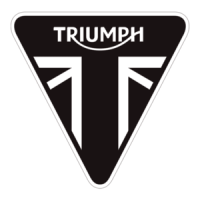
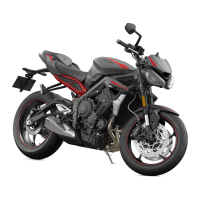

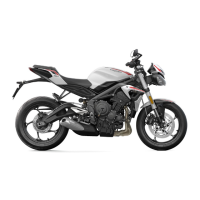

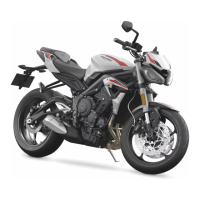



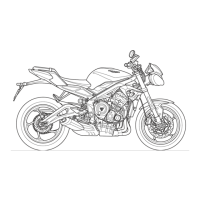


